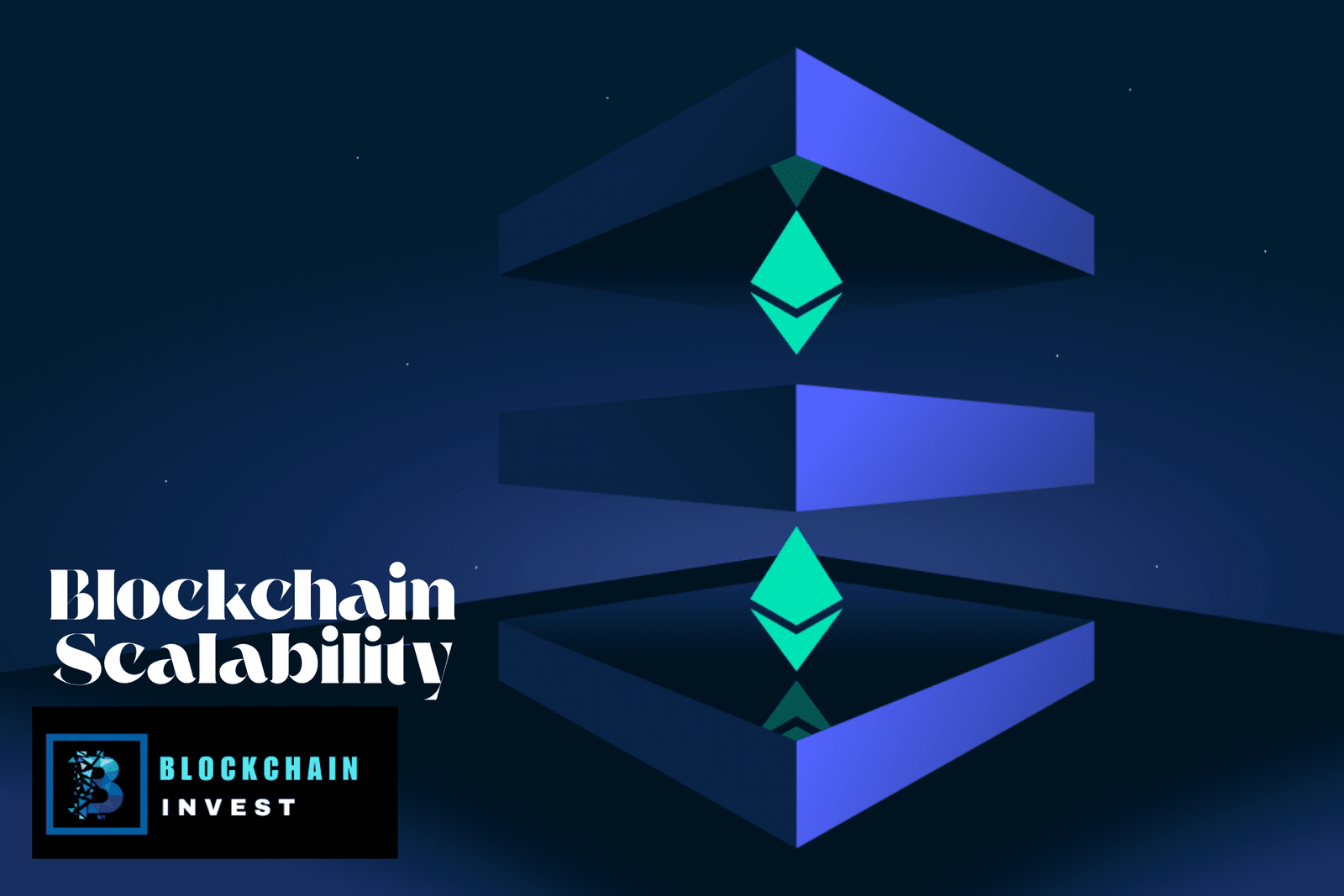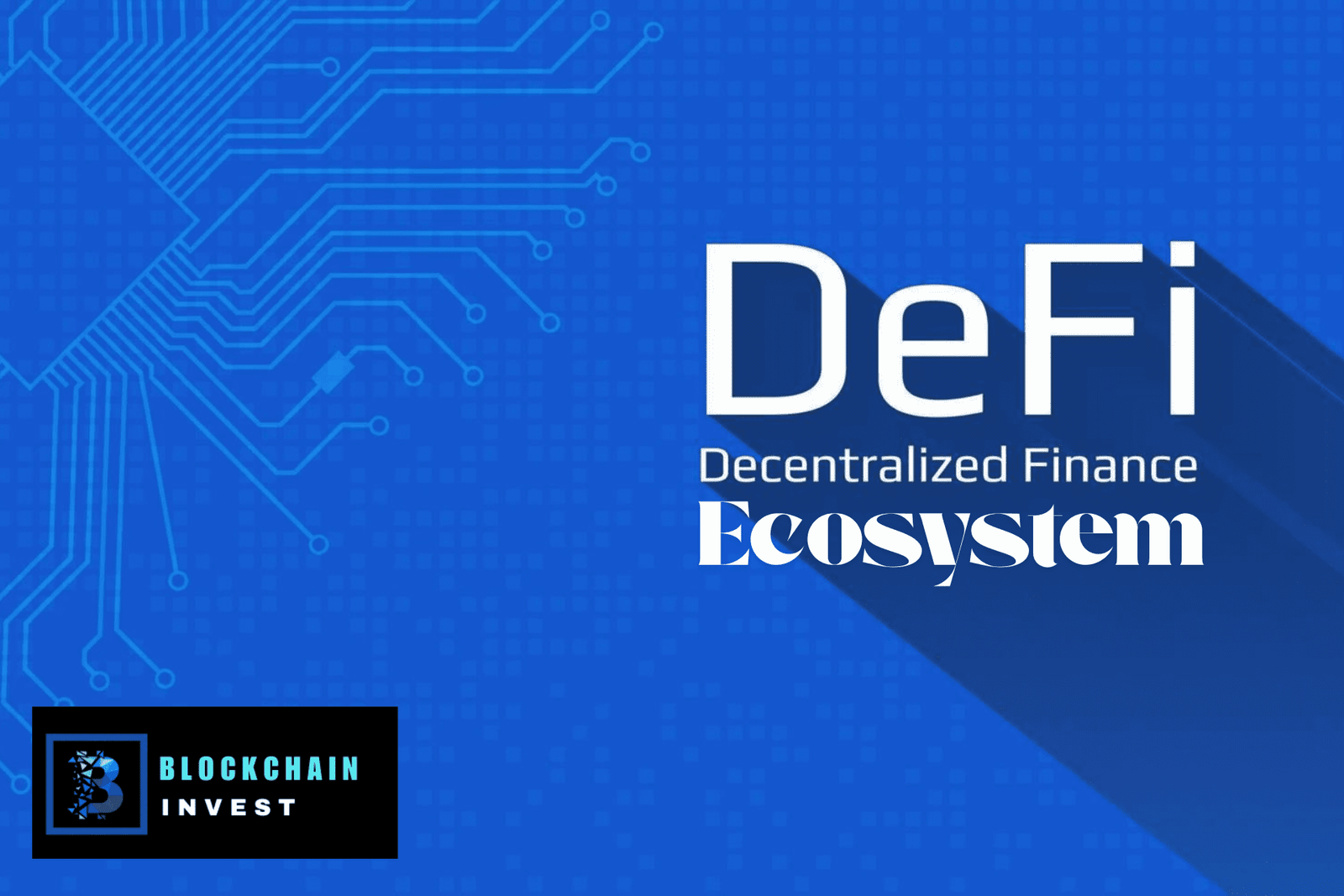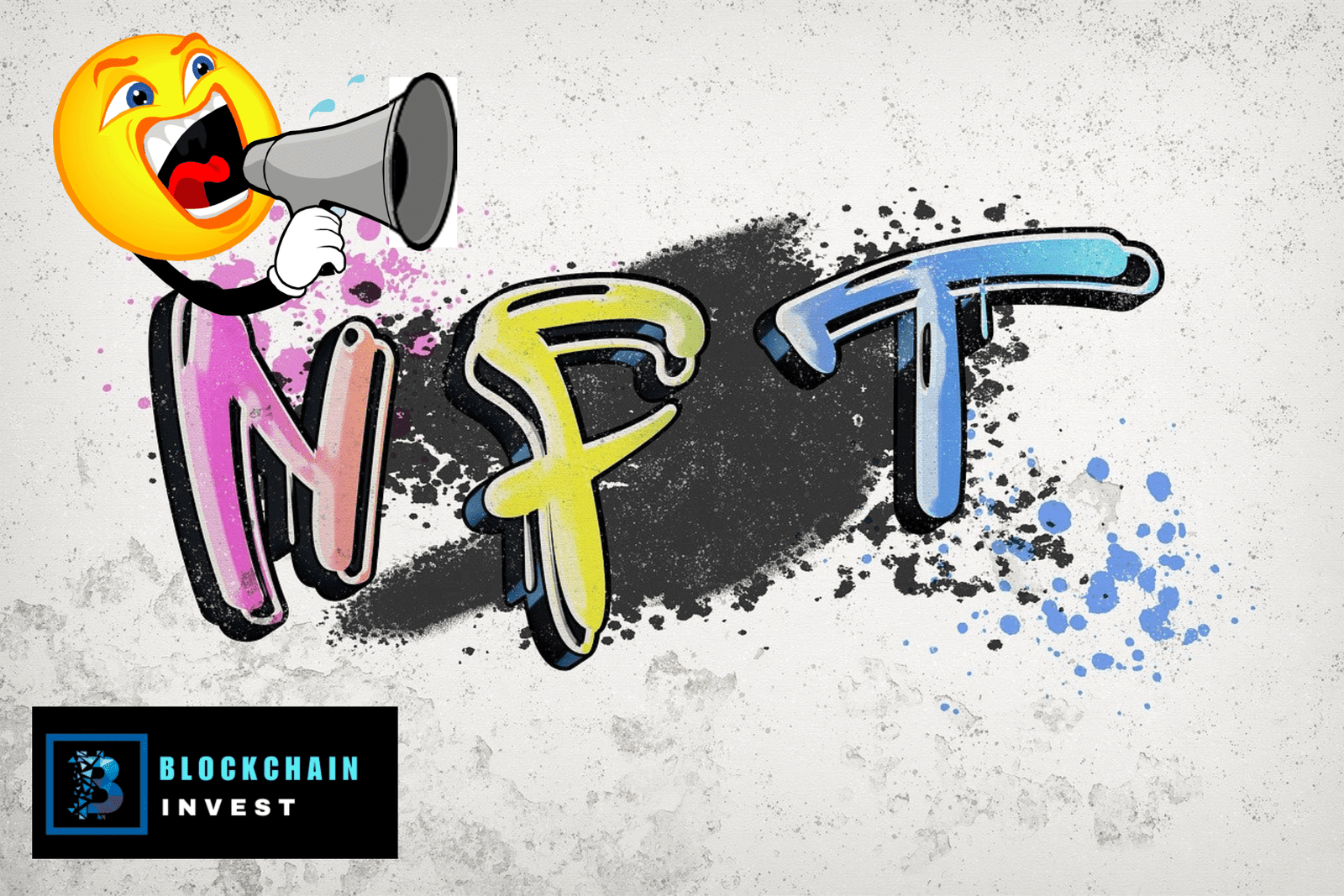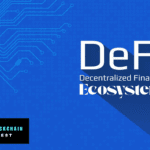Blockchain Scalability: How Different Chains Solve Speed Issues?
Here’s What’s Inside This Blog Post1 Understanding Blockchain Scalability2 Factors Affecting Blockchain Speed2.1 Network Latency2.2 Block Size Limitations3 Layer

Here’s What’s Inside This Blog Post
- 1 Understanding Blockchain Scalability
- 2 Factors Affecting Blockchain Speed
- 3 Layer 1 Solutions
- 4 Layer 2 Solutions
- 5 Hybrid Approaches
- 6 Comparative Analysis
- 7 Case Studies: Blockchain Scalability in Action
- 8 Future Trends
- 9 Frequently Asked Questions
- 10 Conclusion
Blockchain technology faces a big challenge, SCALABILITY. How do different chains solve speed issues?
Blockchain scalability is a hot topic in the tech world. As blockchain grows, the need for faster transactions becomes crucial. Many blockchains are exploring ways to improve their speed. Each one has unique methods and solutions. Understanding these can help us see the future of blockchain.
In this article, we explore how various blockchain networks are solving scalability issues and what technologies they’re deploying to ensure fast, efficient performance.
Understanding Blockchain Scalability
Blockchain technology has transformed numerous industries, from finance to supply chain management. Yet, as more people and companies adopt this technology, the need for scalable solutions becomes critical. How can different chains ensure speed without compromising security?
Scalability is crucial for blockchain networks to handle an increasing number of transactions. Imagine you are at a busy grocery store checkout. If only one cashier is available, the line gets longer and longer. Similarly, a blockchain network with poor scalability can lead to slower transaction times and higher fees.
For blockchain to become mainstream, it must process transactions quickly and efficiently. Think of how Visa and Mastercard handle thousands of transactions per second. Blockchain networks need to match or exceed this speed to stay relevant.
Current blockchain networks face several hurdles in achieving scalability. One significant challenge is the block size limit. A limited block size means fewer transactions can be processed in each block. This leads to congestion and slower transaction speeds.
Another challenge is the time it takes to validate transactions. Imagine sending money to a friend and having to wait hours for confirmation. This delay can be frustrating and impractical for everyday use.
Additionally, increasing the number of nodes in a network can slow down transaction processing. More nodes mean more data to synchronize, which can lead to bottlenecks.
So, how do different chains tackle these issues? Are there innovative solutions already in place? Let’s dive deeper to find out how blockchain scalability can be improved.
:max_bytes(150000):strip_icc()/what-are-layer-1-and-layer-2-blockchain-scaling-solutions-7104877-final-6a3ee3188cad46d8b3d788588cab5ab0.png)
Factors Affecting Blockchain Speed
Blockchain technology holds great promise. Yet, its speed can vary. Several factors impact how fast transactions process. By understanding these factors, one can grasp how different chains address speed issues.
Network Latency
Network latency refers to the delay in data transfer. This delay affects the speed of blockchain transactions. A high latency means slower transaction speeds. Various factors cause network latency. These include geographic distance, network congestion, and data packet loss. Lower latency leads to faster transactions.
Block Size Limitations
Block size limitations also affect blockchain speed. Larger blocks can hold more transactions. Yet, they take longer to process and verify. Smaller blocks process quickly, but hold fewer transactions. Finding the right balance is key. Block size impacts both speed and efficiency.
Layer 1 Solutions
Blockchain technology faces significant challenges with scalability. Layer 1 solutions aim to address these issues at the base layer of the blockchain. These solutions improve the blockchain’s speed and capacity without changing the core protocol. Two prominent Layer 1 solutions are Proof of Stake and Sharding.
Proof Of Stake
Proof of Stake (PoS) is a consensus mechanism. It replaces the traditional Proof of Work (PoW). PoS reduces energy consumption significantly. Validators are chosen based on their stake in the network. The more tokens they hold, the higher their chances. This method speeds up transaction processing. It also secures the network efficiently. Ethereum is transitioning to PoS for better scalability.
Sharding
Sharding divides the blockchain into smaller pieces, called shards. Each shard processes transactions in parallel. This parallel processing boosts the network’s capacity. Transactions within a shard are faster. Sharding reduces the load on the main blockchain. It allows more transactions per second. This method enhances both speed and efficiency. Ethereum plans to implement sharding in future upgrades.
Examples:
- Ethereum 2.0: Plans to implement sharding to scale its network (Ethereum Foundation).
- Near Protocol: Uses horizontal sharding for enhanced scalability (Near Protocol).

Layer 2 Solutions
Blockchain technology has transformed many industries. Yet, scalability remains a big challenge. Layer 2 solutions offer a way to solve speed issues. These solutions work on top of the main blockchain, or Layer 1. They help process more transactions quickly and efficiently. Let’s explore two popular Layer 2 solutions: state channels and rollups.
State Channels
State channels are like private highways for transactions. They let users make many transactions off-chain. Only the final result gets recorded on the blockchain. This reduces the load on the main chain. It makes transactions faster and cheaper. State channels are perfect for applications needing frequent interactions, like gaming or micropayments.
Rollups
Rollups bundle multiple transactions into a single batch. This batch then gets processed off-chain. The results are submitted back to the main blockchain. There are two types of rollups: optimistic and zero-knowledge (ZK). Optimistic rollups assume transactions are valid unless proven otherwise. ZK rollups use cryptographic proofs to ensure validity. Both methods boost transaction speed and lower costs.
Examples:
- Ethereum: Rollups (e.g., Optimism, Arbitrum), Plasma, and State Channels.
- Bitcoin: Lightning Network, which facilitates near-instant transactions with minimal fees.
Hybrid Approaches
Blockchain scalability is a critical issue in the world of decentralized technology. Hybrid approaches are increasingly popular for solving speed issues. They combine different technologies to enhance performance and efficiency. Two prominent examples are Plasma Chains and Sidechains.
Plasma Chains
Plasma Chains are secondary chains that run alongside the main blockchain. They allow for faster transactions and lower fees. Plasma Chains process many transactions off-chain and then submit a summary to the main blockchain. This reduces the load on the main chain. Users enjoy quicker transactions and improved scalability.
Sidechains
Sidechains are independent blockchains that operate alongside the main chain. They use a two-way peg to transfer assets between the main chain and the sidechain. Sidechains offer flexibility and faster processing times. Developers can experiment with new features without affecting the main blockchain. Sidechains enhance scalability by distributing the transaction load.
Comparative Analysis
The following table summarizes the scalability solutions adopted by major blockchains as of June 2025:
| Blockchain | TPS (Approx.) | Scalability Solutions | Key Strength | Key Challenge |
|---|---|---|---|---|
| Bitcoin | 7 | Lightning Network, SegWit | Security, Decentralization | Limited TPS |
| Ethereum | 15 (Mainnet) | Sharding, Rollups, PoS | Ecosystem Maturity | High Fees (Mainnet) |
| Solana | 65,000 | PoH, Tower BFT | High Speed, Low Fees | Centralization Concerns |
| BSC | 100 | DPoS | Low Fees, Accessibility | Centralization |
| Polkadot | 1,000 | Parachains | Interoperability | Complexity |
| Avalanche | 4,500 | Subnets, Avalanche Consensus | Flexibility | Emerging Ecosystem |
Case Studies: Blockchain Scalability in Action
Case Study: Ethereum
Blockchain technology is impressive, but it faces challenges with speed and scalability. Ethereum, a popular blockchain, has struggled with these issues. This case study explores how Ethereum addresses these problems, focusing on Ethereum 2.0 upgrades and their impact on speed and scalability.
Ethereum 2.0 Upgrades
Ethereum 2.0 aims to improve the network’s efficiency. It introduces a new proof-of-stake mechanism instead of the old proof-of-work. This change reduces the energy needed for transactions. Validators replace miners. They lock up their Ether to secure the network. This makes the system faster and less resource-intensive.
Ethereum 2.0 also introduces sharding. Sharding splits the database into smaller pieces called shards. Each shard can process transactions independently. This means more transactions can happen at once. It spreads the load across the network. Together, these upgrades promise significant improvements in speed and scalability.
Impact On Speed And Scalability
The upgrades have a direct impact on transaction speeds. With Ethereum 2.0, transactions are faster and cheaper. The network can handle more transactions per second. This reduces congestion during high-usage times. Users experience quicker transaction confirmations. Fees become more predictable and lower.
Scalability also improves. With sharding, the network can grow without losing efficiency. More users and applications can join. The network adapts to increased demand. This makes Ethereum more attractive for developers and businesses. It supports a wider range of applications and use cases.
In summary, Ethereum 2.0 addresses key issues of speed and scalability. The upgrades make the network faster, more efficient, and ready for future growth.
Case Study: Solana’s High-Speed Architecture
Blockchain scalability is a significant concern. Many chains face speed issues as they grow. Solana, a high-performance blockchain, has implemented unique solutions to address this challenge. This case study explores Solana’s approach to improving transaction speed and efficiency. We will look into its high-performance mechanisms and the trade-offs and benefits involved.
High-performance Mechanisms
Solana uses a unique technology called Proof of History (PoH). PoH records the passage of time between transactions. This helps in ordering transactions quickly. It allows nodes to verify the order of events without communicating with each other. This reduces the time needed for consensus.
Another key feature is the Tower BFT consensus algorithm. It is an optimized version of the Practical Byzantine Fault Tolerance (PBFT). Tower BFT leverages PoH to achieve faster consensus. This combination helps Solana process thousands of transactions per second.
Solana also uses Gulf Stream, a mempool-less transaction forwarding protocol. It pushes transactions to validators before the next block is confirmed. This minimizes the confirmation time.
Trade-offs And Benefits
While Solana’s design offers high-speed performance, it has trade-offs. One of the main trade-offs is hardware requirements. Validators need powerful hardware to handle the high throughput. This can limit decentralization, as not everyone can afford such equipment.
However, the benefits are significant. Solana achieves high scalability without sacrificing security. It can process up to 65,000 transactions per second. This makes it suitable for various applications, from DeFi to NFTs.
Despite the hardware requirements, Solana has managed to maintain a relatively decentralized network. It has a growing number of validators, contributing to its security and robustness.
Case Study: Avalanche and the Snow Protocol
Avalanche addresses scalability through its Snowman consensus protocol, a variation of the Avalanche consensus optimized for smart contracts. With sub-second finality and thousands of TPS, Avalanche supports multiple custom blockchains (called subnets) within its ecosystem. These subnets allow projects to scale independently while still benefiting from the security of the Avalanche network, making it highly attractive for DeFi and enterprise adoption.
Case Study: Polkadot’s Parachains
Polkadot introduces scalability through its parachain architecture, which allows multiple blockchains to run in parallel, each optimized for specific use cases. These parachains communicate via the Relay Chain, enabling cross-chain interoperability and resource sharing. This parallel processing significantly increases overall network throughput while maintaining decentralization and security.
Case Study: Cardano’s Ouroboros Protocol
Cardano focuses on scalability with its Ouroboros PoS consensus, which divides time into epochs and slots, allowing transactions to be validated efficiently. With the introduction of Hydra, a Layer 2 solution, Cardano aims to scale to millions of TPS through isomorphic state channels, ideal for microtransactions and enterprise-scale apps.
Future Trends
Blockchain scalability faces challenges with speed. Various chains tackle this by using unique methods to enhance transaction rates. Solutions include sharding, layer 2 protocols, and consensus mechanism improvements.
Blockchain technology has revolutionized many industries. However, its scalability issues have been a significant barrier to wider adoption. In the future, numerous innovative solutions are being developed to address these speed issues. Let’s dive into what the future holds for blockchain scalability and how it may impact the technology’s adoption.
Innovative Solutions In Development
Blockchain developers are constantly seeking new ways to enhance speed and efficiency. One promising solution is sharding. Sharding splits the blockchain into smaller, more manageable pieces, or shards, each processing transactions independently. This means the system can handle more transactions simultaneously.
Another approach is Layer 2 solutions. These are built on top of the existing blockchain and aim to offload some of the transaction processing to a secondary layer. Examples include the Lightning Network for Bitcoin and Plasma for Ethereum. These solutions can significantly reduce congestion and improve transaction speeds.
Consensus algorithms are also evolving. New algorithms like Proof of Stake (PoS) and Delegated Proof of Stake (DPoS) are designed to be more efficient than the traditional Proof of Work (PoW). They require less computational power, enabling faster and more scalable networks.
Potential Impacts On Blockchain Adoption
These advancements could have a profound impact on blockchain adoption. Faster transaction speeds mean blockchain technology can be used in more applications. This includes everything from financial services to supply chain management, where quick, efficient transactions are crucial.
Lower costs are another significant benefit. With improved scalability, transaction fees can decrease, making blockchain more accessible to smaller businesses and individuals. This could democratize the technology, opening it up to a broader audience.
Furthermore, enhanced user experience is key. When transactions are processed quickly and efficiently, users are more likely to trust and rely on blockchain technology. This trust can drive more widespread adoption, integrating blockchain into everyday life.
Imagine a world where your coffee purchase is processed on a blockchain network as quickly as a credit card transaction. This is not just a tech dream but a tangible future reality.
Are you excited about these future trends? How do you think blockchain scalability improvements will shape our digital landscape?
These are exciting times for blockchain technology. Keep an eye on these trends as they unfold and consider how they might impact your industry or personal tech use.
Frequently Asked Questions
How To Solve Blockchain Scalability Issues?
To solve blockchain scalability issues, implement sharding, layer 2 solutions, and optimize consensus algorithms. Use sidechains and off-chain transactions.
What Are The Layer 2 Solutions To Improve The Scalability Of Blockchain?
Layer 2 solutions include state channels, sidechains, and rollups. State channels enable off-chain transactions. Sidechains run parallel to the main blockchain. Rollups bundle multiple transactions into one.
Why Is Scalability Important In Blockchain?
Scalability is crucial in blockchain because it ensures the network can handle a growing number of transactions efficiently. This leads to faster processing times, lower costs, and better user experience. Scalable blockchains can support more users and applications, driving widespread adoption and innovation.
What Are The 5 Key Dimensions Of Scalability In A Blockchain System?
The 5 key dimensions of scalability in a blockchain system are transaction throughput, latency, security, decentralization, and storage capacity.
Conclusion
Blockchain scalability is no longer a theoretical challenge—it’s a real-world bottleneck being addressed with innovative and diverse solutions. Ethereum relies on Layer 2 rollups and future sharding, Solana boasts high-speed native architecture, and Polkadot uses parallel chains for distributed load.
Meanwhile, Avalanche introduces customizable subnets, and Cardano explores channel-based scaling. Each chain offers a unique approach to solving speed and congestion issues, and the best solution often depends on the application—whether it’s DeFi, gaming, NFTs, or enterprise platforms. As demand for blockchain applications grows, scalability will remain a defining factor in the race for mass adoption.










